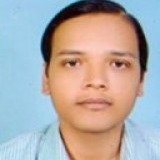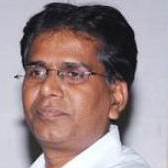International Journal of Intelligent Systems and Applications (IJISA)
IJISA Vol. 5, No. 1, 8 Dec. 2012
Cover page and Table of Contents: PDF (size: 772KB)
Energy-Sustainable Framework and Performance Analysis of Power Scheme for Operating Systems: A Tool
Full Text (PDF, 772KB), PP.1-15
Views: 0 Downloads: 0
Author(s)
Index Terms
Energy Efficiency, Exhaustive Mode, Green Computing, Hibernate, Shutdown, Swift Mode
Abstract
Recently, an Information and Communications Technology (ICT) devices has become more user-friendly, which raised the problem of power dissipation across the globe and computer systems are one among them. This emerging issue of power dissipation has imposed a very significant issue on the system and software design. The concept of ‘green computing’ gaining popularity and is being considered as one of the most promising technology by the designers of Information Technology (IT) industry, which demonstrate the environmentally responsible way to reduce the power consumption and maximize the energy efficiency. In this paper, we have proposed an energy sustainable framework of the power schemes for operating systems to reduce the power consumption by computer systems and presented a Green Power tool (GP tool). This tool is designed using JAVA technology, which requires least configuration to make a decision for reducing the power consumption and proposed Swift mode algorithm, allows users to input the working time of their choice then after the end of time algorithm starts detection of human activity on the computer system. We also compared the Swift mode algorithm with existing power scheme in the operating system that provides up to 66% of the power saving. Finally, we have profiled the proposed framework to analyze the memory and Central Processing Unit (CPU) performance, which demonstrated that there is no memory leakage or CPU degradation problem and framework’s behavior remain constant under various overhead scenarios of the memory as well as CPU. The proposed framework requires 3–7 MB memory space during its execution.
Cite This Paper
P. K. Gupta, G. Singh, "Energy-Sustainable Framework and Performance Analysis of Power Scheme for Operating Systems: A Tool", International Journal of Intelligent Systems and Applications(IJISA), vol.5, no.1, pp.1-15, 2013.DOI:10.5815/ijisa.2013.01.01
Reference
[1]Ruediger Kuehr and Eric Williams, “Computers and the Environment: Understanding and Managing their Impacts,” Kluwer Academic Publishers, October 2010, pp. 1-285.
[2]C. A Webber, R. E Brown and J Koomey, “Savings estimate for the ENERGY STAR® voluntary labelling program,” Energy Policy, v28, n15, 2000, pp. 1137 – 1149.
[3]Sandeep K.S. Gupta, Tridib Mukherjee, Georgios Varsamopoulos and Ayan Banerjee, “Research directions in energy-sustainable cyber–physical systems,” Sustainable Computing: Informatics and Systems, v1, n1, 2011, pp. 57 – 74.
[4]S. Murugesan, “Harnessing green it: principles and practices,” IEEE IT Professional, v10, n1, 2008, pp. 24–33.
[5]Judy A. Roberson, Gregory K. Homan, Akshay Mahajan, Bruce Nordman, Carrie A. Webber, Richard E. Brown, Marla McWhinney, and Jonathan G. Koomey, “Energy Use and Power Levels in New Monitors and Personal Computers,” LBNL-48581, Lawrence Berkeley National Laboratory, 2002, pp. 1 – 36.
[6]B. Nordman, M. A. Piette, K. Kinney and C. Webber, “User guide to power management for PCs and monitors,” LBNL-39466, Lawrence Berkeley National Laboratory, 1997, pp. 1 – 72.
[7]Mary Jo Foley, “Windows server still rules the server roots” IDC, June 3, 2010.
[8]Kaoru Kawamoto, Jonathan G Koomey, Bruce Nordman, Richard E Brown, Mary Ann Piette, Michael Ting and Alan K Meier, “Electricity used by office equipment and network equipment in the US,” Energy, v27, n3, 2002, pp. 255 – 269.
[9]Ishfaq Ahmad and Sanjay Ranka, “Handbook of Energy-Aware and Green Computing” Chapman & Hall/CRC Computer and Information Science series, CRC Press, 2012, pp. 1 – 1196.
[10]Qilin Li and Mingtian Zhou, “The survey and future evolution of green computing,” Proc. IEEE/ACM International Conference on Green Computing and Communications, China, 2011, pp. 230 – 233.
[11]P. K. Gupta, G. Singh, "Minimizing Power Consumption by Personal Computers: A Technical Survey", IJITCS, vol.4, no.10, pp.57-66, 2012.
[12]P. K. Gupta and G. Singh, “A framework of creating intelligent power profiles in operating systems to minimize power consumption and greenhouse effect caused by computer systems," Journal of Green Engineering, v1, n2, 2011, pp. 145 – 163.
[13]Shuyi Chen, Kaustubh R. Joshi, Matti A. Hiltunen, Richard D. Schlichting and William H. Sanders, “Using CPU gradients for performance-aware energy conservation in multitier systems,” Sustainable Computing: Informatics and Systems, v1, n2, 2011, pp. 113 – 133.
[14] Hui Chen, Shinan Wang and Wei song Shi, “Where does the power go in a computer system: experimental analysis and implications,” Proc. IEEE International Green Computing Conference and Workshops, Orlando, FL, 2011, pp. 1 – 6.
[15]Benjamin Zhong, Ming Feng and Chung-Horng Lung, “A green computing based architecture comparison and analysis,” Proc. IEEE/ACM International Conference on Green Computing and Communications, Hangzhou, 2010, pp. 386 – 391.
[16]Timo Minartz, Thomas Ludwig, Michael Knobloch and Bernd Mohr, “Managing hardware power saving modes for high performance computing,” IEEE International Green Computing Conference and Workshops, Orlando, FL, 2011, pp. 1-8.
[17]Vasileios Spiliopoulos, Stefanos Kaxiras and Georgios Keramidas, “Green governors: a framework for continuously adaptive DVFS,” Proc. IEEE International Green Computing Conference and Workshops, Orlando, FL, 2011, pp. 1 – 8.
[18]Lei Ye, Chris Gniady and John H. Hartman, “Energy-efficient memory management in virtual machine environments,” Proc. IEEE International Green Computing Conference and Workshops, Orlando, FL, 2011, pp. 1 - 8.
[19]Ran Duan, Mingsong Bi and Chris Gniady, “Exploring memory energy optimizations in smartphones,” Proc. IEEE International Green Computing Conference and Workshops, Orlando, FL, 2011, pp. 1 - 8.
[20]Luyang Wang and Tao Wang, “Green computing wanted: electricity consumptions in the IT industry and by household computers in five major Chinese cities,” Proc. IEEE/ACM International Conference on Green Computing and Communications, Sichuan, 2011, pp. 226 – 229.
[21]Lichen Weng, Gang Quan and Chen Liu, “PCOUNT: a power aware fetch policy in simultaneous multithreading processors,” Proc. IEEE International Green Computing Conference and Workshops, Orlando, FL, 2011, pp. 1 - 6.
[22]Shen Li, and Tarek Abdelzaher and Mindi Yuan, “TAPA: temperature aware power allocation in data center with map-reduce,” Proc. IEEE International Green Computing Conference and Workshops, Orlando, FL, 2011, pp. 1 - 8.
[23]Sandeep K.S. Gupta, Rose Robin Gilbert, Ayan Banerjee, Zahra Abbasi, Tridib Mukherjee and Georgios Varsamopoulos, “GDCSim: A tool for analyzing green data center design and resource management techniques,” Proc. IEEE International Green Computing Conference and Workshops, Orlando, FL, 2011, pp. 1 - 8.
[24]T. Do, S. Rawshdeh and W. Shi, “PTOP: a process-level power profiling tool,” Proc. 2nd Workshop on Power Aware Computing and Systems (HotPower’09), Big Sky, MT, 2009, pp. 1-5.
[25]Sudhanva Gurumurthi, Anand Sivasubramaniam, Mary Jane Irwin, N. Vijaykrishnan, Mahmut Kandemir, Tao Li and Lizy Kurian John, “Using complete machine simulation for software power estimation: the Soft Watt Approach,” Proc. 8th International Symposium on High-Performance Computer Architecture (HPCA.02), USA, 2002, pp. 141 – 150.
[26]Kutty S Banerjee and Emmanuel Agu, “PowerSpy: fine-grained software energy profiling for mobile devices,” Proc. IEEE International Conference on Wireless Networks, Communications and Mobile Computing, MA, USA, 2005, pp. 1136 – 1141.
[27]Stefan Naumann, Markus Dick, Eva Kern and Timo Johann, “The GREENSOFT Model: a reference model for green and sustainable software and its engineering,” Sustainable Computing: Informatics and Systems, v1, n4, 2011, pp. 294 – 304.
[28]P. K. Gupta and G. Singh, “Energy-sustainable snapshot algorithm for operating systems to minimize power consumption,” Sustainable Computing: Informatics and Systems, 2012. (Under review)
[29]NetBeans IDE 7.1.2, http://netbeans.org/community/news/show/1556.html (accessed 2012-05-05)
[30]Peng Hao-lin, Liu Yi-min, You Xiang-bai, “Research on memory leakage in Java application,” Proc. IEEE International Conference on Computer Science and Information Technology, Wuhan, China, v2, 2010, pp. 146-148.
[31]G. Chen, R. Shetty, M. Kandemir, N. Vijaykrishnan, M. J. Irwin and M. Wolczko, “Tuning garbage collection for reducing memory system energy in an embedded Java environment,” ACM Trans. on Embedded Computing Systems, v1, n1, 2002, pp. 27–55.

